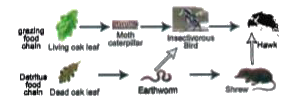Formulae for ortho-, pyro-, chain-, and double chain silicates are respectively:
[SiO4]4−,[Si2O7]6−,[Si2O3]2−,[SiO11]6−
[SiO4]4−,[Si2O7]6−,[SiO3]2−,[Si4O11]6−
[SiO4]4−,[Si2O7]4−,[SiO3]2−,[SiO11]6−
[SiO4]4−,[Si2O6]6−,[SiO3]2−,[SiO11]6−
The correct Answer is:B
To solve the question regarding the formulas for ortho-, pyro-, chain-, and double chain silicates, we will analyze each type of silicate and derive their respective formulas step by step.
1. Ortho-silicate:
- Ortho-silicates are the simplest form of silicates where no oxygen atoms are shared between the tetrahedral units.
- Each tetrahedron consists of one silicon atom (Si) surrounded by four oxygen atoms (O).
- The formula for ortho-silicate is:
SiO4−4
2. Pyro-silicate:
- In pyro-silicates, two tetrahedral units share one oxygen atom.
- This sharing results in a structure that can be represented as two SiO4 tetrahedra connected through one shared oxygen.
- The formula for pyro-silicate is:
Si2O6−7
3. Chain silicate:
- Chain silicates involve the sharing of two oxygen atoms between tetrahedral units, forming a chain-like structure.
- Each unit in the chain can be represented as SiO3.
- The formula for chain silicate is:
SiO2−3
4. Double chain silicate:
- In double chain silicates, three oxygen atoms are shared between tetrahedral units, leading to a more complex structure.
- The formula for double chain silicate can be represented as:
Si4O6−11
Summary of Formulas:
- Ortho-silicate: SiO4−4
- Pyro-silicate: Si2O6−7
- Chain silicate: SiO2−3
- Double chain silicate: Si4O6−11
Final Answer:
The formulas for ortho-, pyro-, chain-, and double chain silicates are respectively:
- SiO4−4
- Si2O6−7
- SiO2−3
- Si4O6−11
- Ortho-silicates are the simplest form of silicates where no oxygen atoms are shared between the tetrahedral units.
- Each tetrahedron consists of one silicon atom (Si) surrounded by four oxygen atoms (O).
- The formula for ortho-silicate is:
SiO4−4
- In pyro-silicates, two tetrahedral units share one oxygen atom.
- This sharing results in a structure that can be represented as two SiO4 tetrahedra connected through one shared oxygen.
- The formula for pyro-silicate is:
Si2O6−7
- Chain silicates involve the sharing of two oxygen atoms between tetrahedral units, forming a chain-like structure.
- Each unit in the chain can be represented as SiO3.
- The formula for chain silicate is:
SiO2−3
- In double chain silicates, three oxygen atoms are shared between tetrahedral units, leading to a more complex structure.
- The formula for double chain silicate can be represented as:
Si4O6−11
- Ortho-silicate: SiO4−4
- Pyro-silicate: Si2O6−7
- Chain silicate: SiO2−3
- Double chain silicate: Si4O6−11
The formulas for ortho-, pyro-, chain-, and double chain silicates are respectively:
- SiO4−4
- Si2O6−7
- SiO2−3
- Si4O6−11
Topper's Solved these Questions
- JEE MAIN REVISION TEST - 18BOOK - VMC MODULES ENGLISHCHAPTER - JEE MAIN REVISION TEST - 18EXERCISE - CHEMISTRY - SECTION 2
5 Videos
- JEE MAIN REVISION TEST - 13BOOK - VMC MODULES ENGLISHCHAPTER - JEE MAIN REVISION TEST - 13EXERCISE - CHEMISTRY (SECTION 2)
5 Videos
- JEE MAIN REVISION TEST - 19BOOK - VMC MODULES ENGLISHCHAPTER - JEE MAIN REVISION TEST - 19EXERCISE - CHEMISTRY
26 Videos
Similar Questions
Chain silicates can be represented as
View SolutionPyro-silicates are formed by
View SolutionPhytol chain is present in
View SolutionIn a food chain herbivores are
View SolutionIn a food chain herbivores are
View SolutionGrazing food chain
View SolutionPreparation of organosilicones from SiCl4 involves substituion in first step:
SiCl4+xRMgCl→(R)xSiCl4−x+xMgCl2
Values of 'x' to obtain chain terminating & chain multiplication parts of chain silicone produced are respectively:
View SolutionWhich of the following is an example of chain silicates?
View SolutionA food chain starts with
View SolutionGiven figure represents food chains of a deciduous woodland linked together to form a food web.

Which of the following constitute first trophic level of the grazing food chain and the detritus food chain respectively ?
View Solution
